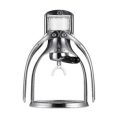Business Models of Restaurants
What are the different business models of restaurants?
There are several business models that a restaurant can adopt, depending on factors such as its target market, the type of cuisine it serves, and its location. Here are a few common business models for restaurants
Full-service restaurant: This type of restaurant provides table service, a menu with a wide range of dishes, and a full bar. The restaurant typically serves lunch and dinner and may also offer brunch on weekends.
Quick-service restaurant (QSR): A QSR is a fast-food-style restaurant that focuses on serving customers quickly and efficiently. Customers typically place their orders at a counter and then sit down to eat or take their food to go.
Fine dining restaurant: This type of restaurant provides a high-end dining experience with formal service and a menu that features upscale dishes made with premium ingredients. Fine dining restaurants usually have a dress code and often require reservations.
Casual dining restaurant: A casual dining restaurant is a type of restaurant that provides a less formal dining experience than a fine dining restaurant, but with a higher level of service than a QSR. Casual dining restaurants usually serve a wide range of dishes and may also have a bar.
Specialty restaurant: A specialty restaurant focuses on serving a specific type of cuisine, such as Italian, Chinese, or Mexican food. This type of restaurant may offer a limited menu, but the dishes are typically prepared with high-quality ingredients and traditional techniques.
Each of these business models has its own advantages and disadvantages, and the best one for a particular restaurant will depend on its specific goals, target market, and location. The most important factor is to develop a clear and sustainable business plan, which includes a marketing strategy, a menu that appeals to customers, and a pricing strategy that balances revenue with costs.
There are several business models that a restaurant can adopt, depending on factors such as its target market, the type of cuisine it serves, and its location. Here are a few common business models for restaurants:
Full-service restaurant: This type of restaurant provides table service, a menu with a wide range of dishes, and a full bar. The restaurant typically serves lunch and dinner and may also offer brunch on weekends.
Quick-service restaurant (QSR): A QSR is a fast-food style restaurant that focuses on serving customers quickly and efficiently. Customers typically place their orders at a counter and then sit down to eat or take their food to go.
Fine dining restaurant: This type of restaurant provides a high-end dining experience with formal service and a menu that features upscale dishes made with premium ingredients. Fine dining restaurants usually have a dress code and often require reservations.
Casual dining restaurant: A casual dining restaurant is a type of restaurant that provides a less formal dining experience than a fine dining restaurant, but with a higher level of service than a QSR. Casual dining restaurants usually serve a wide range of dishes and may also have a bar.
Specialty restaurant: A specialty restaurant focuses on serving a specific type of cuisine, such as Italian, Chinese, or Mexican food. This type of restaurant may offer a limited menu, but the dishes are typically prepared with high-quality ingredients and traditional techniques.
Each of these business models has its own advantages and disadvantages, and the best one for a particular restaurant will depend on its specific goals, target market, and location. The most important factor is to develop a clear and sustainable business plan, which includes a marketing strategy, a menu that appeals to customers, and a pricing strategy that balances revenue with costs.
Check at https://restosales.com/


























